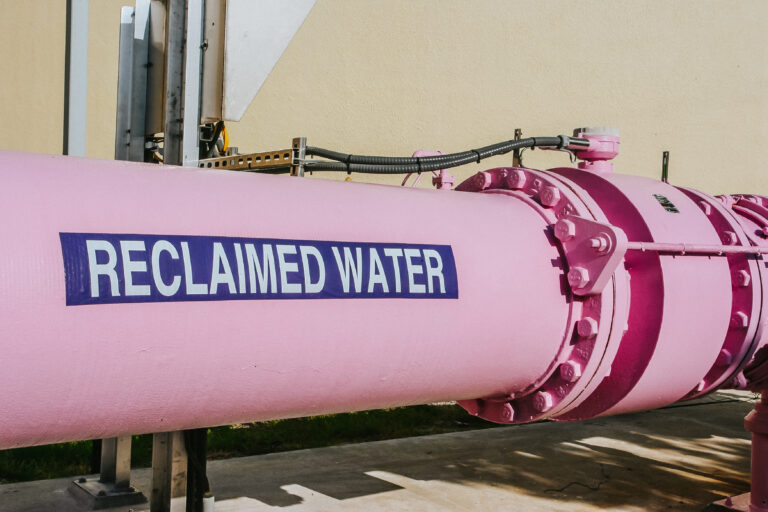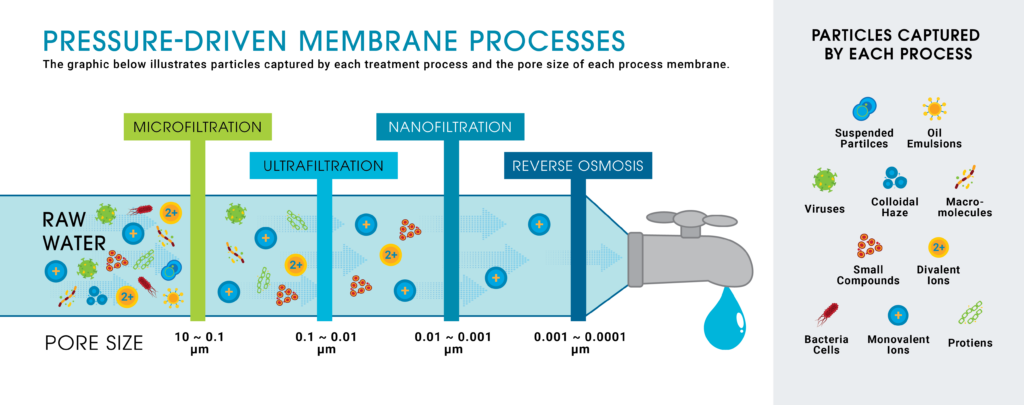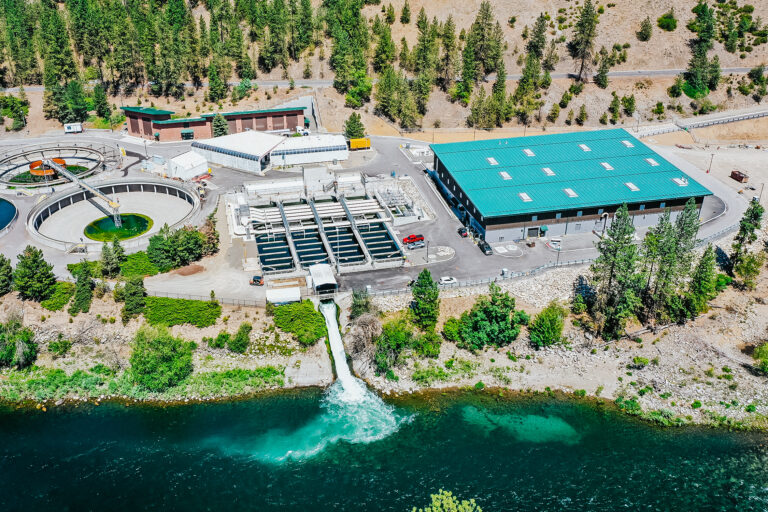Author: Alexis Gee
In light of skyrocketing freshwater demands and ever-intensifying weather shifts, the imperative for establishing sustainable water infrastructure becomes even more pronounced. As a firm with a 200-year history steeped in water and wastewater treatment innovation, MWH partners with municipalities, public utility providers, and private industrial clients to effectively tackle water quality and scarcity challenges.
Advancing water reuse is an increasingly attractive solution that will address a diverse array of intricate water management issues, from bolstering the resilience of water supplies in the face of mounting pressures to accommodate growing populations to mitigating saltwater encroachment. Water reuse is important because it aids in mitigating the impacts of severe weather events and sewer overflows, providing a comprehensive approach to adapting our water systems to the changing environment.
Non-Potable Reuse
Non-potable water reuse involves treating wastewater to a quality suitable for specific non-drinking purposes. This method is often used for irrigation, industrial processes, and more. Technologies include:
- Secondary Treatment: Basic treatment methods like sedimentation, biological processes, and disinfection can be employed to remove solids and pathogens.
- Tertiary Treatment: Advanced filtration, microfiltration, UV disinfection, and chlorine treatment enhance water quality.
- Decentralized Systems: Modular treatment units installed at the point of use can provide efficient non-potable water sources for individual buildings or communities.
When discussing non-potable reuse, MWH’s Director of Construction Services, Kiersten Lee, PE, explained, “Our team is always focused on reusing water during construction. We seize as many opportunities as possible to use non-potable water for dust control, hydrostatic testing, concrete, and commissioning.”

Non-potable reuse is not new, but MWH consistently tries to find better ways to drive water sustainability. “One of the innovative things that we constantly focus on is how to be good stewards of water when there’s no water around,” remarked Lee. “On the Southern Delivery System project in Colorado Springs, we built 15 miles of pipeline, three pump stations, and a 50 MGP plant in the middle of nowhere. There was a lot of effort to successfully move and store water so we didn’t have to discharge and bring new water out there. Now, we use the lessons learned from that Colorado Springs project to benefit similarly water-scarce project sites, such as the Portland Water Bureau’s ongoing Bull Run Filtration and Pipeline projects.”
Direct & Indirect Potable Reuse (DPR/IPR)
Water reuse for non-potable applications has long been accepted and is a successful means of maintaining freshwater supplies. Though it may not be common knowledge, revitalizing aquifers and augmenting water supplies with reused water has been happening for years and continues to escalate today as the world experiences greater water scarcity.
“Depending on where you live, you’re already consuming reused water, whether you know it or not,” Lee advised. “Municipal wastewater and drinking water are more regulated and more closely monitored than bottled water, which is regulated by the Food and Drug Administration.”
DPR involves treating wastewater to a level that meets or exceeds drinking water quality standards. This treated water is then introduced directly into the potable water supply. Advanced treatment processes are utilized, including:
- Microfiltration and Ultrafiltration: These processes use fine membranes to remove particles, bacteria, and some viruses from the water.
- Reverse Osmosis: This high-pressure process forces water through a semipermeable membrane to remove salts, dissolved solids, and contaminants.
- Advanced Oxidation Processes: Techniques like UV (ultraviolet) and ozone treatment break down organic and chemical contaminants.

IPR involves injecting treated wastewater into non-potable water sources, allowing natural processes to purify the water further before it’s used for potable purposes. Key steps include:
- Advanced Treatment: Similar to DPR, advanced treatment technologies are employed to ensure high-quality reclaimed water.
- Aquifer Recharge: Injecting treated water into underground aquifers provides natural filtration, with the soil and rock acting as a barrier against contaminants.
- Groundwater Recharge and Recovery: After a period of underground storage, the water is pumped out and treated further before entering the drinking water system.
“Just because water comes from an aquifer doesn’t mean it hasn’t been blended with treated water from a municipal source,” Lee commented. “If one community is doing deep well injection to recharge its aquifer, wells downstream pull water out of the same aquifer to serve the surrounding community.”
We are determined to build systems that make people feel confident that reclaimed water is to drink. As an industry, we have to succeed in building confidence in water reuse to ensure water security for the future.
Kiersten Lee – Vice President and Director of Commissioning
Innovative Water Reuse Technologies
MWH stands at the forefront of a technological revolution in the construction industry, embracing state-of-the-art innovations to drive transformative water reuse projects forward. For the ongoing $1.78B Southeast Treatment Plant Biosolids Digester Facilities project in San Francisco, CA, MWH is installing the Cambi Thermal Hydrolysis Process (CambiTHP™), a technology that’s reshaping how municipalities deal with the waste in wastewater.
To boil it down, CambiTHP is a two-step process of heating sludge (wastewater solids) under pressure followed by rapid decompression or steam explosion. This pressure-cooker-esque process sterilizes, solubilizes, and disintegrates the sludge, resulting in a pathogen-free fertilizer with no potential for regrowth of disease-carrying microorganisms.

When asked about innovations related to water reuse and resource recovery, Lee described the benefits of cogeneration systems. “Methane produced from the treatment process can be used as fuel. Some agencies scrub the gas to achieve the level of cleanliness needed to inject it into the natural gas grid, while others implement cogeneration systems. These systems use the gas byproduct to power generators that power the wastewater treatment process.”
Other cutting-edge water reuse technologies include:
- Membrane Bioreactors (MBR): Combining biological treatment with membrane filtration, MBR systems efficiently remove organic matter and pathogens, producing high-quality reclaimed water.
- Forward Osmosis (FO): FO utilizes osmotic pressure to draw water through a semipermeable membrane. It’s being explored for desalination and concentrating wastewater, thus reducing disposal volumes.
- Electrochemical Processes: Technologies like electrocoagulation and electrooxidation use electrical currents to treat wastewater, removing contaminants and producing reusable water.
- Nanotechnology: Nanomaterials can be employed in water treatment processes, such as nanofiltration and adsorption, to enhance contaminant removal and increase efficiency.
- Smart Water Management: Integration of sensors, real-time data monitoring, and predictive analytics enable optimized water reuse operations, minimizing energy and resource consumption.
Biofiltration and Natural Systems: Constructed wetlands, natural filtration basins, and living machine systems mimic biological processes to treat wastewater in a sustainable and ecologically friendly manner.
While water reuse technologies offer promising solutions, challenges remain, including public acceptance, regulatory frameworks, and upfront investments. With increasing awareness of water scarcity and sustainability, innovative water reuse technologies have the potential to revolutionize how we manage and conserve water resources for generations to come.


